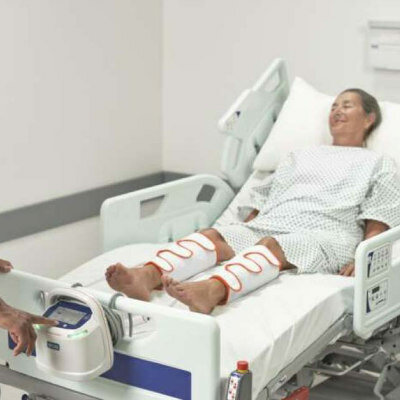Voice Feature Analysis May Predict Incipient Heart Disease
|
By Daniel Beris Posted on 30 Nov 2016 |

Image: Human voice features could help identify heart disease (Photo courtesy of Beyond Verbal).
A new study suggests a strong correlation between some voice characteristics and the presence of coronary artery disease (CAD).
Researchers at Beyond Verbal (Tel Aviv, Israel) and the Mayo Clinic (Rochester, MN, USA), conducted a double-blind study involving 150 patients, including 120 patients who presented for coronary angiography, 21 apparently healthy control volunteers, and 9 control subjects who were referred to non-cardiac procedures. All subjects had their voice signal recorded prior to coronary angiography using the Beyond Verbal app, downloaded to their personal smartphone device.
Voice was then analyzed for multiple pre-specified features of intensity and frequency by different analytic tools. A total of three 30-second separate baseline voice recordings were documented and analyzed for each participant; first, the participant was asked to read a text; second, the participant was asked to describe a positive experience; and third, the participant was asked to describe a negative experience. Mel Frequency Cepstral Coefficients (MFCCs) were used in order to extract features from the voice signal.
The results identified 13 voice features that were associated with CAD. Stepwise binary logistic regression, with adjustment for age and gender, identified one voice feature that was associated with a 19-fold increased likelihood of CAD. With adjustment for age, gender, and cardiovascular risk factors, this feature was independently associated with a significant 2.6-fold increased likelihood of CAD. The study was presented as a poster session at the American Heart Association (AHA) scientific sessions, held during November 2016 in New Orleans (LA, USA).
“One voice characteristic in particular indicated an almost 20-fold increase in the likelihood of CAD. Since such voice characteristics can even be identified over a phone call, it is even feasible that people will be screened for CAD over the phone,” concluded lead author Elad Maor, MD, PhD, and colleagues of the Mayo Clinic. “Beyond that, identifying more voice biomarkers can produce a comprehensive test that would identify the possibility of a number of different conditions.”
“A patient’s voice is the most readily available, easy to capture, and rich output the body offers. We are very excited to be able to work with Mayo Clinic on such a breakthrough research, studying the potential of using the human voice in healthcare monitoring, and specifically cardiovascular disease,” said Yuval Mor, CEO of Beyond Verbal.
Related Links:
Beyond Verbal
Mayo Clinic
Researchers at Beyond Verbal (Tel Aviv, Israel) and the Mayo Clinic (Rochester, MN, USA), conducted a double-blind study involving 150 patients, including 120 patients who presented for coronary angiography, 21 apparently healthy control volunteers, and 9 control subjects who were referred to non-cardiac procedures. All subjects had their voice signal recorded prior to coronary angiography using the Beyond Verbal app, downloaded to their personal smartphone device.
Voice was then analyzed for multiple pre-specified features of intensity and frequency by different analytic tools. A total of three 30-second separate baseline voice recordings were documented and analyzed for each participant; first, the participant was asked to read a text; second, the participant was asked to describe a positive experience; and third, the participant was asked to describe a negative experience. Mel Frequency Cepstral Coefficients (MFCCs) were used in order to extract features from the voice signal.
The results identified 13 voice features that were associated with CAD. Stepwise binary logistic regression, with adjustment for age and gender, identified one voice feature that was associated with a 19-fold increased likelihood of CAD. With adjustment for age, gender, and cardiovascular risk factors, this feature was independently associated with a significant 2.6-fold increased likelihood of CAD. The study was presented as a poster session at the American Heart Association (AHA) scientific sessions, held during November 2016 in New Orleans (LA, USA).
“One voice characteristic in particular indicated an almost 20-fold increase in the likelihood of CAD. Since such voice characteristics can even be identified over a phone call, it is even feasible that people will be screened for CAD over the phone,” concluded lead author Elad Maor, MD, PhD, and colleagues of the Mayo Clinic. “Beyond that, identifying more voice biomarkers can produce a comprehensive test that would identify the possibility of a number of different conditions.”
“A patient’s voice is the most readily available, easy to capture, and rich output the body offers. We are very excited to be able to work with Mayo Clinic on such a breakthrough research, studying the potential of using the human voice in healthcare monitoring, and specifically cardiovascular disease,” said Yuval Mor, CEO of Beyond Verbal.
Related Links:
Beyond Verbal
Mayo Clinic
Channels
Critical Care
view channel
Light-Based Technology to Measure Brain Blood Flow Could Diagnose Stroke and TBI
Monitoring blood flow in the brain is crucial for diagnosing and treating neurological conditions such as stroke, traumatic brain injury (TBI), and vascular dementia. However, current imaging methods like... Read more
AI Heart Attack Risk Assessment Tool Outperforms Existing Methods
For decades, doctors have relied on standardized scoring systems to assess patients with the most common type of heart attack—non-ST-elevation acute coronary syndrome (NSTE-ACS). The GRACE score, used... Read moreSurgical Techniques
view channel
Minimally Invasive Endoscopic Surgery Improves Severe Stroke Outcomes
Intracerebral hemorrhage, a type of stroke caused by bleeding deep within the brain, remains one of the most challenging neurological emergencies to treat. Accounting for about 15% of all strokes, it carries... Read more
Novel Glue Prevents Complications After Breast Cancer Surgery
Seroma and prolonged lymphorrhea are among the most common complications following axillary lymphadenectomy in breast cancer patients. These postoperative issues can delay recovery and postpone the start... Read morePatient Care
view channel
Revolutionary Automatic IV-Line Flushing Device to Enhance Infusion Care
More than 80% of in-hospital patients receive intravenous (IV) therapy. Every dose of IV medicine delivered in a small volume (<250 mL) infusion bag should be followed by subsequent flushing to ensure... Read more
VR Training Tool Combats Contamination of Portable Medical Equipment
Healthcare-associated infections (HAIs) impact one in every 31 patients, cause nearly 100,000 deaths each year, and cost USD 28.4 billion in direct medical expenses. Notably, up to 75% of these infections... Read more
Portable Biosensor Platform to Reduce Hospital-Acquired Infections
Approximately 4 million patients in the European Union acquire healthcare-associated infections (HAIs) or nosocomial infections each year, with around 37,000 deaths directly resulting from these infections,... Read moreFirst-Of-Its-Kind Portable Germicidal Light Technology Disinfects High-Touch Clinical Surfaces in Seconds
Reducing healthcare-acquired infections (HAIs) remains a pressing issue within global healthcare systems. In the United States alone, 1.7 million patients contract HAIs annually, leading to approximately... Read moreBusiness
view channel
Philips and Masimo Partner to Advance Patient Monitoring Measurement Technologies
Royal Philips (Amsterdam, Netherlands) and Masimo (Irvine, California, USA) have renewed their multi-year strategic collaboration, combining Philips’ expertise in patient monitoring with Masimo’s noninvasive... Read more
B. Braun Acquires Digital Microsurgery Company True Digital Surgery
The high-end microsurgery market in neurosurgery, spine, and ENT is undergoing a significant transformation. Traditional analog microscopes are giving way to digital exoscopes, which provide improved visualization,... Read more
CMEF 2025 to Promote Holistic and High-Quality Development of Medical and Health Industry
The 92nd China International Medical Equipment Fair (CMEF 2025) Autumn Exhibition is scheduled to be held from September 26 to 29 at the China Import and Export Fair Complex (Canton Fair Complex) in Guangzhou.... Read more














